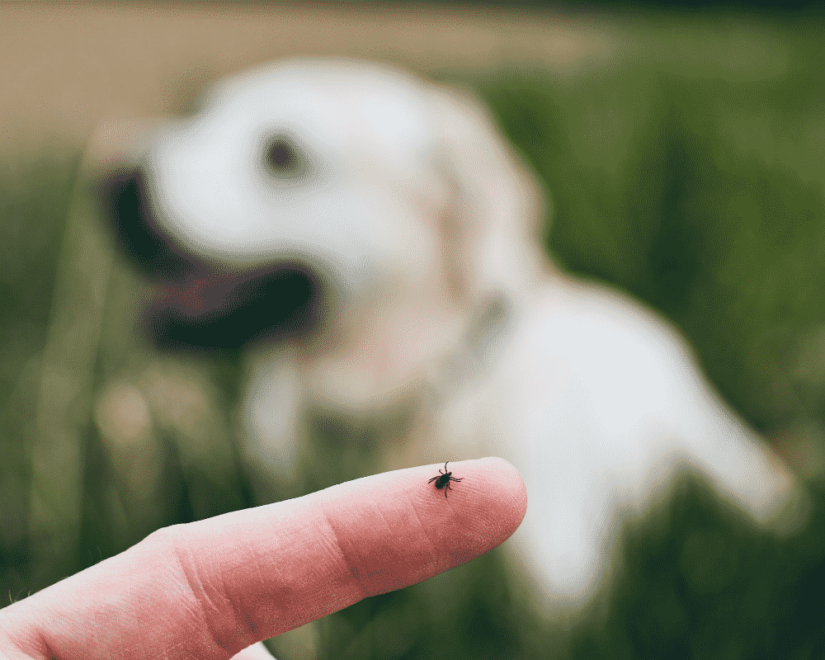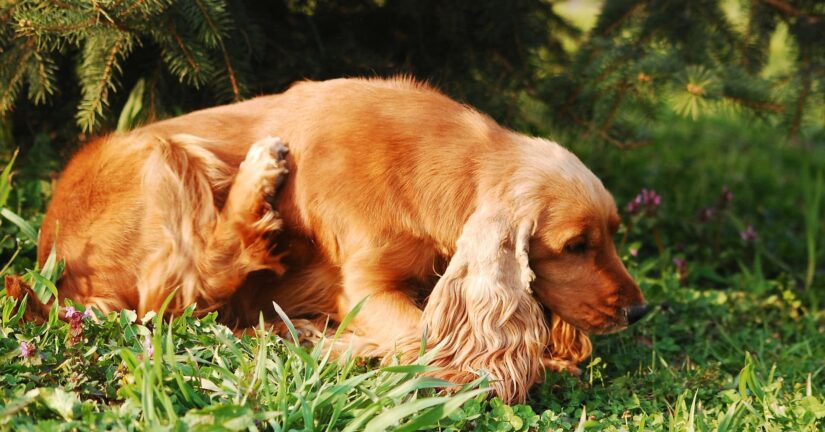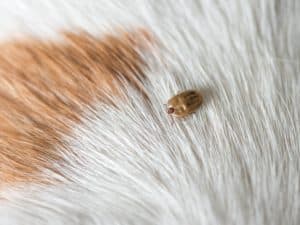Taking care of a loved one, whether it be human or animal, involves many of the same components: providing nutritious food, exercise, sleep, mental enrichment and maintaining proper hygiene. But flea and tick prevention? That requires extra attention for our pets! These parasites are an ever-present threat and prefer damp woodpiles, tall grasses, dark cracks and crevices and hitching rides on furry critters.
Ticks are notoriously hardy; their life cycle can take years to complete, and they wait to invade yards and homes until the conditions are just right. When the warmer temperatures begin to set in, ticks become active, looking for their next meal.
If brought into your home, fleas can be a year-round threat. And if wildlife lives in your area, they can jump species any time throughout all seasons. A flea that falls off your pet can live in the environment for weeks to months, no matter its current life cycle (egg, larvae, pupa, adult).
Blood meals are required for both types of parasites to mature. Once they feed on their prey, they can spread potentially fatal or life-long diseases like Lyme, anemia, ehrlichiosis, cat-scratch disease and bubonic plague. The bites themselves can be very uncomfortable, and their saliva can sometimes cause a severe allergic reaction.
To prevent your dog from contracting fleas and ticks, there are pre-emptive measures you can take.
Flea and tick prevention for dogs
It’s always best to prevent a flea or tick infestation than to try to mitigate an existing problem. Tiny parasites are incredibly difficult to detect until they have had a large blood meal or the flea load is significant. Fleas and ticks reproduce incredibly quickly; one adult flea can lay up to 500 eggs. Fortunately, there’s a multitude of safe, preventative products.
Topical treatments
Topical flea and tick treatments were developed back in the 1980s, and while other products have been added to the market since then, spot-on treatments are still one of the most effective tools at killing all life stages of these pests. Most topicals are applied monthly, such as Frontline Plus. As a bonus, many topical treatments are safe for our youngest puppies and kittens, who have especially vulnerable immune systems.
Oral medication
Other flea and tick medications are administered in pill or chewable, like Simparica, Simparica Trio and Nexgard. These products are also given monthly. Simparica Trio has the added benefit of also protecting your pet against heartworm disease, roundworms and hookworms. Comfortis is a chewable medication that is known for its quick-kill abilities for fleas only, eliminating adults before they can lay eggs.
Flea and tick collars
Flea and tick collars have come a long way in the last few decades. Seresto is a collar that is placed on your pet once every 8 months. Preventic is a tick-only collar that can be worn for up to three months. Owners like the convenience of the collar products and the fact that they are a non-greasy application.
Because every dog, its environment, parasite load, sensitivities and risk of re-exposure is different, a veterinary opinion is critical when selecting safe and effective flea and tick prevention for dogs. It’s a creepy-crawly world out there, so be sure to do your part in cleaning and maintaining both your indoor and outdoor spaces too. And remember—prevention is the best form of medicine!
How to keep fleas and ticks out of your home and yard
What are the best measures to take to prevent flea and tick parasitism and environmental infestation? A key point to note is that without maintaining a clean inside and outside environment, you will not be able to control flea and tick populations once they’ve appeared, even if you’ve treated your pet.
Indoor environmental control should involve frequent cleaning, including vacuuming and washing all bedding, rugs and soft goods at a high temperature; high dryer heat will kill parasites.
When it comes to your yard, eliminate hiding places for fleas and ticks by cutting back grass and weeds, removing yard waste like leaves and stick and avoiding housing large piles of wood. Maintain a tidy landscape and try to keep large ornamental plants away from the foundation of your home. It’s also important that you don’t feed wildlife. Attracting raccoons, deer, opossums, mice, skunks and squirrels can lead to additional hitchhiking parasites.
Through the years, home remedies like herbal sprays, diatomaceous earth and citrus peels have been used to lessen pest problems. There are also outdoor products that can be used to treat your yard, and it’s best that they are applied by a licensed and trained professional.
At Pet Butler, we want you and your pet to live your best and healthiest lives, which is why we offer pet waste removal and other services year-round. With 1 gram of dog poop containing 23 million fecal bacteria, scooping your pet’s poop regularly is crucial to your family’s health. We offer weekly, bi-weekly, monthly and one-time clean-up services to work with your schedule and needs.


